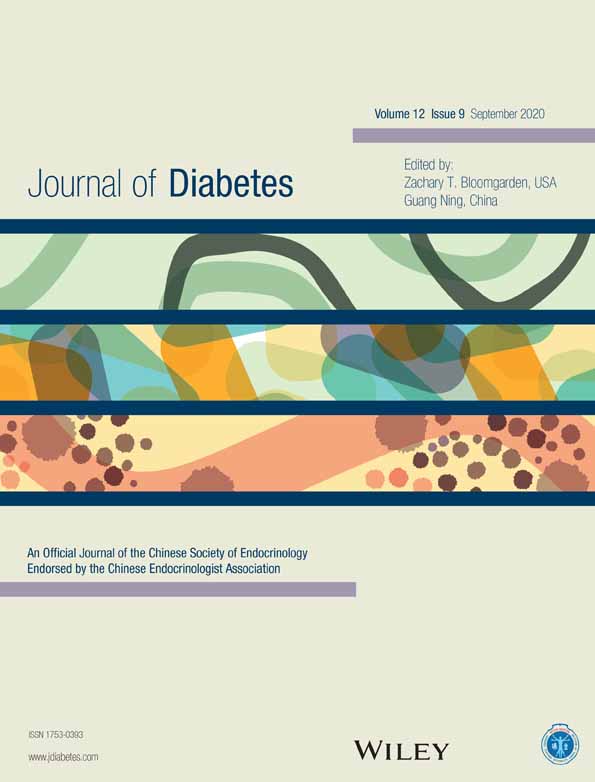Paradigm shift in the management of DM & CVD—preventing the next CV event
DM和CVD管理的范式转变——预防下一次CV事件
BACKGROUND
Over the past 4 years, we have witnessed cardiovascular outcome trials (CVOT) relevant to the treatment of type 2 diabetes for nine different medications from five classes: proprotein convertase subtilisin/kexin type 9 inhibitors (PCSK9i),1, 2 glucagon-like peptide 1 receptor agonists (GLP-1RA),3 sodium glucose cotransporter 2 inhibitors (SGLT2i),4 the omega 3-fatty acid icosapent ethyl (IPE),5 and pioglitazone.6 These findings bring great news to health care. However, they have created confusion among health care professionals not knowing which drug would be more appropriate to their patients with diabetes who are at high risk for events, whether atherosclerotic cardiovascular disease (ASCVD), heart failure (HF), chronic kidney disease (CKD), or mortality. Evidence for the confusion are the current practice recommendations which provide little guidance as to which of these new (and costly) medications should be chosen.7-11 These diabetes management practice recommendations typically suggest to merely chose an SGLT2i or a GLP-1RA and fail to directly address the role of specific lipid-lowering drugs with proven outcome in this population.
THE PROBLEM
The precise mechanism by which most of these agents prevent events is not clear. All the agents benefit similar patients, and most, if not all, prevent major adverse cardiac events and mortality. However, each agent seems to impact a different aspect of the outcome. SGLT2i are better in preventing HF and CKD, GLP-1RA may reduce strokes, and IPE as well as PCSK9i prevent ASCVD. However, because the baseline characteristics of the patients are similar and the outcome cannot be predicted, clinicians have few clues as to identifying the appropriate agent for a particular patient and are left perplexed and in need of guidance.
CONTEMPORARY PRACTICE RECOMMENDATIONS
Most guidelines recommend managing and controlling individual CV risk factors. Traditionally the diabetologists controlled glucose-lowering agents,12 the lipidologists controlled low-density lipoprotein cholesterol (and perhaps triglyceride)-lowering agents,13 and the cardiologists addressed hypertension and/or coagulation and/or lipids. Meanwhile, we witnessed the evolution of simultaneously controlling all CV risk factors, an approach which is currently practiced by many.14 Recently the Food and Drug Administration (FDA), based on superior CVOT results, awarded new indications to these drugs to prevent ASCVD morbidity and mortality. However, only few contemporary guidelines are recommending focusing on the ultimate outcome, preventing the next CV morbidity and mortality rather than controlling individual CV risk factors.
THE FUTURE
The management of patients with diabetes mellitus (DM) and risk for ASCVD has progressed to a new dimension moving from treating biomarkers, such as the levels of glucose, lipids, and blood pressure, to preventing the next ASCVD event independent of the individual risk factors. We currently have exciting therapeutic agents with compelling data, as was not previously the case; there is, however, a lack of direction as to when to use which of the medications, matching them to the appropriate patient. Not only clinicians, but also experts and leaders, are at a loss. Some specialists suggest the administration of combinations of several (if not all) of these medications to persons at risk. This way seems attractive to potentially improving the patient outcome. However, there are limitations to this approach. There is limited (or no) data supporting these combinations to further improve CV outcome. The patients are typically already on at least six to seven medications, and many may decline more than one additional drug. Not least, “pharmacy benefit management” companies may resist these costly medications, leading to what has been described as a “paradigm shift: from doctor–patient to payer–patient relationship.”15 As such, tools are needed to provide better clinical clarity, to identify features and patient characteristics which would favor the choice of one drug over another.
In summary, we are in the process of changing the management of patients with cardiometabolic disease at high risk or with established ASCVD. We are evolving from the traditional approach of managing patients' individual CV risk, based on treatment of specific risk factors, to focusing on preventing the next event. There are emerging recommendations to add IPE to the “standard of care” for all patients with established ASCVD or with diabetes at high CV risk because of the compelling evidence of its ability to prevent further revascularization, ASCVD events, and mortality—independent of its impact on traditional and known biomarkers. Similarly, there are recommendations to prescribe SGLT2i to all patients with diabetes because of the class's ability to prevent CV events, HF hospitalization, deterioration of kidney disease, and mortality, again independent of its impact on glycemia and other biomarkers. One could equally argue for administration of GLP-1RA or PCSK9i to all patients with diabetes based on their evidence of preventing adverse outcome.
A CALL FOR ACTION
With the goal of preventing the next event, rather than merely controlling CV risks, medical societies should incorporate the goal of preventing the next event as part of their guidelines. Further, clarity is needed to identify which of these medications or their combinations—SGLT2i, PCSK9i, GLP-1RA, IPE, and pioglitazone—is/are the most appropriate and the most promising in preventing morbidity and mortality. We call researchers, governments, industry, and insurance companies to invest in research, including genetics, to identify the best drug or combination of drugs appropriate for specific patients' characteristics to support a new paradigm shift: to management of patients leading to prevention of the next ASCVD event.
在过去的4年里, 我们见证了与治疗2型糖尿病相关的心血管结局实验(CVOT)有关的5类9种不同的药物:枯草杆菌9型原蛋白转换酶抑制剂(PCSK9i)、胰高血糖素样肽1受体激动剂(GLP-1RA)、钠葡萄糖共转运体2抑制剂(SGLT2i)、ωSG脂肪酸二十碳五烯酸乙酯(IPE)和吡格列酮。然而, 这些药物在卫生保健专业人员中造成了困惑, 他们不知道哪种药物更适合处于高风险事件的糖尿病患者, 这些患者有发生动脉粥样硬化性心血管疾病(ASCVD)、心力衰竭(HF)、慢性肾脏疾病(CKD)等事件的高风险。
大多数指南建议管理和控制个人心血管疾病风险因素。传统情况下, 糖尿病学家应用降糖药物, 脂病学家使用可以降低低密度脂蛋白胆固醇(可能还有甘油三酯)的药物, 心脏病学家控制高血压、凝血或脂质。与此同时, 我们有了一种同时控制所有心血管风险因素发展的方法。最近, FDA根据CVOT的优越试验结果, 授予这些药物新的适应症, 以预防ASCVD的发病率和死亡率。然而, 目前只有很少的指南建议关注这个最终结果来预防下一次CV的发病和死亡, 而不是控制个别患者心血管疾病的危险因素。
糖尿病(DM)患者和ASCVD风险的管理已经发展到一个新的层面, 从针对生物指标, 如血糖、血脂和血压水平, 到预防下一次独立于个体危险因素的ASCVD事件。我们目前有令人兴奋的治疗药物, 具有令人信服的数据, 这是以前所没有的;然而, 对于何时使用哪种药物, 将它们与适当的患者相匹配, 却缺乏指导。不仅临床医生, 而且专家和学科带头人也不知所措。一些专家建议对高危人群联合使用几种(如果不是全部)药物。这种方法似乎对潜在改善患者预后很有吸引力。可是, 这种方法有其局限性。支持这些组合以进一步改善CV结果的数据有限(或没有)。这些患者通常已经在服用至少六到七种药物, 许多人可能会拒绝多服用一种以上的额外药物。特别是, “药品效益管理”公司可能会抵制这些昂贵的药物, 导致所谓的“范式转变:从医生-患者关系转变为付款人-患者关系” 。因此, 需要可应用的方案来提供更好的临床清晰度, 识别有利于选择一种药物而不是另一种药物的特征。总之, 我们正在改变心脏代谢性疾病高危患者的治疗方法。从传统的基于特定风险因素来管理患者个人CV风险的方法, 转向专注于预防下一次CV事件。
此外, 需要明确在“SGLT2i、、PCSK9i、GLP-1RA、IPE和吡格列酮”这些药物中的哪一种或它们的组合, 在预防发病率和死亡率方面是最合适和最有希望的。我们呼吁研究人员、政府、行业和保险公司投资于包括遗传学在内的研究, 以确定适合特定患者特征的最佳药物或药物组合, 以支持新的范式转变:向患者管理转变, 从而预防下一次ASCVD事件。




